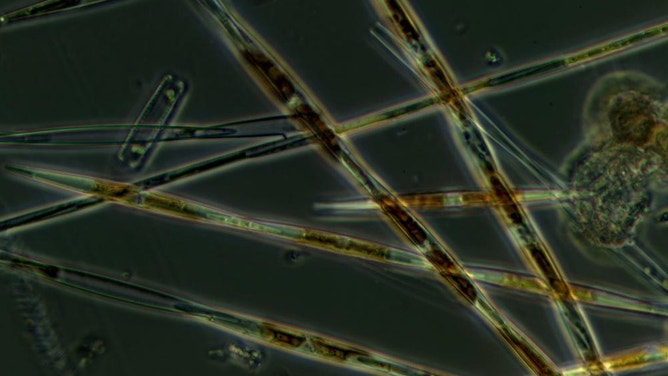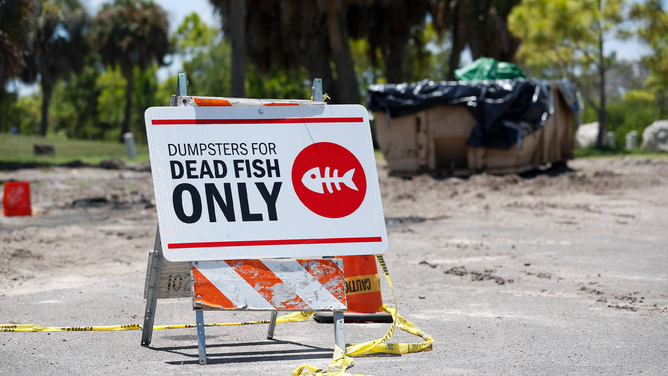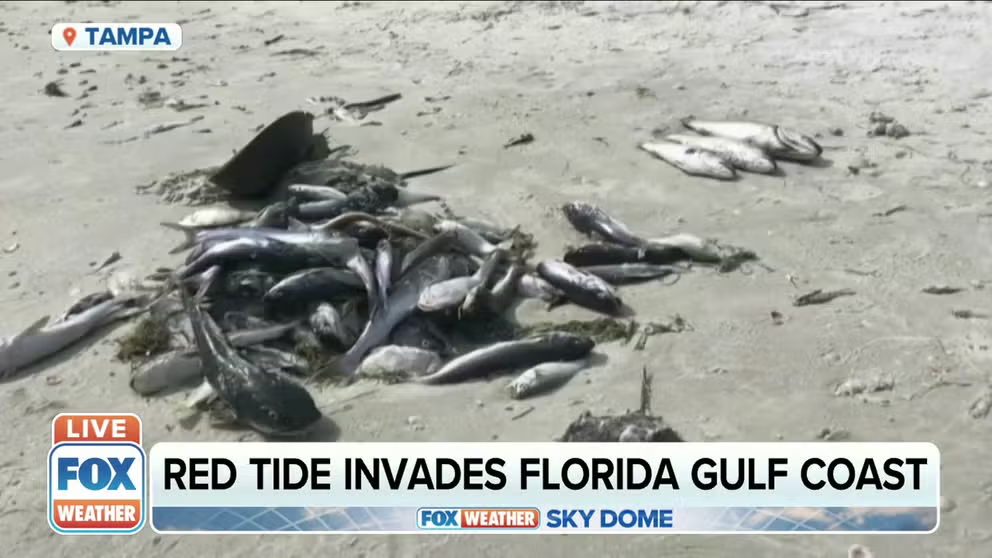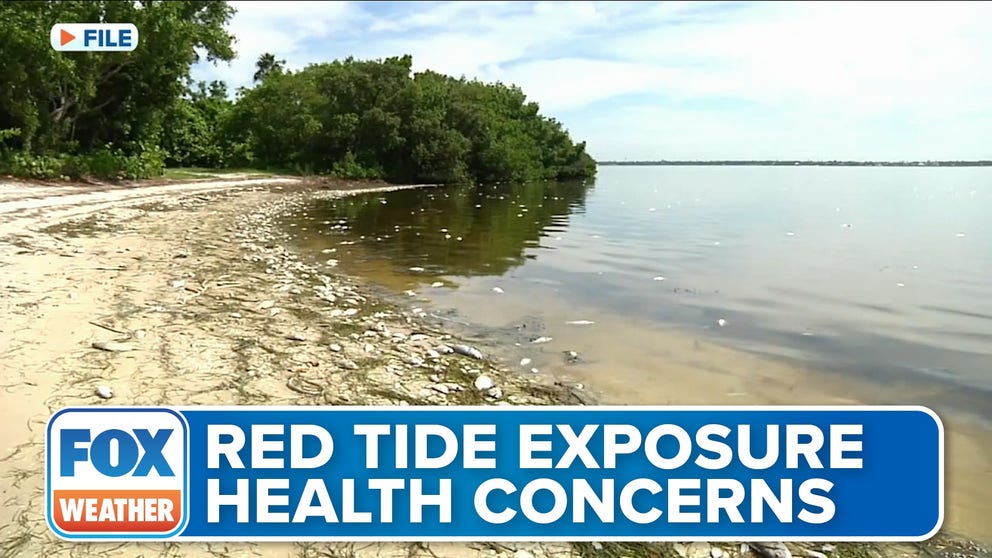What is a 'red tide'?
A red tide can occur in the ocean or bodies of fresh water.
What is a red tide and why are they dangerous?
A "red tide" is a harmful algal bloom that occurs when algae in the ocean and freshwater grows out of control.
A "red tide," or harmful algal bloom, occurs when algae in the ocean and freshwater grows out of control and produces powerful toxins that can harm or kill marine life, birds and even humans.
And while many people refer to the blooms as a "red tide," scientists prefer to use the term harmful algal bloom, according to the National Oceanic and Atmospheric Administration's National Ocean Service.
Pesticides and other chemicals used in farming and factories eventually find their way into oceans and other bodies of water and create harmful algal blooms. And those blooms can kill the fish, shellfish, birds and mammals if eaten.
FLORIDA PREPARES FOR MANATEES SUFFERING FROM RED TIDE
If humans eat any fish or shellfish that came from a red tide area, they too will ingest the toxins and that can make them sick, and in some cases die. As a result, some places restrict fishing until the conditions improve, and even restaurants will take local fish and shellfish off the menu.
FL Gulf Coast beaches invaded by Red Tide
Florida Red Tide is killing Gulf Coast marine life and is also harmful to humans. FOX Weather Correspondent Steve Bender talked with Dr. Fanara with NOAA about what is Red Tide, how does it form, where does it form, the history of our blooms, and what we can do now.
The blooms have been reported in every coastal state, and NOAA says the frequency of red tides has increased. Not only is that harmful to people and marine ecosystems, but local and regional economies may also suffer as a result.
SPRING BREAKERS FACE RED TIDE THREAT IN FLORIDA
The species that causes the most red tides in Florida and the Gulf of Mexico is called Karenia breves, or K. breves for short. K. brevis usually blooms in the late summer or early fall, and large concentrations can discolor the water red or brown.
Pseudo-nitzschia can be found year-round in Florida waters and produce a neurotoxin called domoic acid, which can kill or sicken marine mammals and birds. It can also be dangerous for people if they consume shellfish that are contaminated with the toxins.

A close-up of Pseudo-nitzchia, a common type of phytoplankton. Sometimes, Pseudo-nitzchia blooms may produce domoic acid, a neurotoxin that can cause amnesiac shellfish poisoning.
(NOAA / NOAA)
Pyrodinium bahamense typically blooms in Florida waters during the summer months, especially the Indian River Lagoon, Tampa Bay and Charlotte Harbor. Toward the end of those blooms, P. bahamense forms a seed-like cyst that falls to the bottom and settles in the sediment until ready to germinate. It can also produce neurotoxins that can collect on shellfish, posing a risk to humans if ingested.

FILE - A sign is posted for depositing dead marine life from the Red Tide bacteria into dumpsters, is seen at Maximo Park on July 21, 2021 in St Petersburg, Florida.
(Getty Images/Octavio Jones)
Non-toxic blooms can have a dangerous effect, too. When a large area of algae, like P. bahamense, dies and starts to decompose, that can deplete oxygen levels in the water causing animals to leave the area or die-off. The smell from the decaying algae can also irritate the lungs of humans and birds in the area.
RED TIDE PROMPTS WARNINGS TO STAY AWAY FROM FLORIDA BEACHES
The National Ocean Service has been studying red tides for several years and is working on ways to detect them before they start, and give regions an advance warning so they can plan ahead for the effects the blooms can have on local ecosystems and economies.
Red tide in Florida causing respiratory concerns
Lee Health’s Chief Medical Officer Dr. Iahn Gonsenhauser discusses the health impacts that red tide has and its impact on pets as well.


